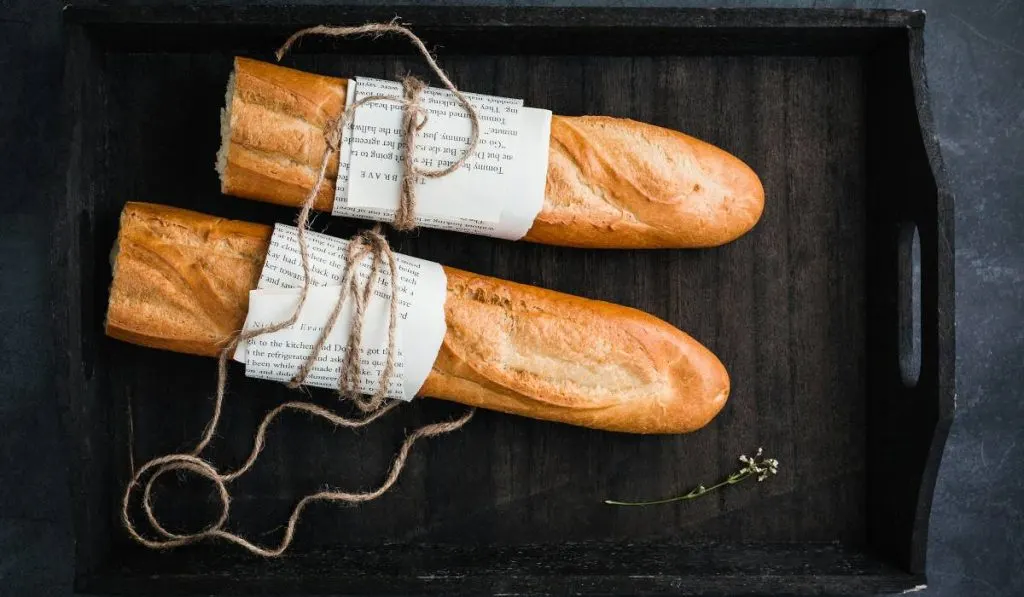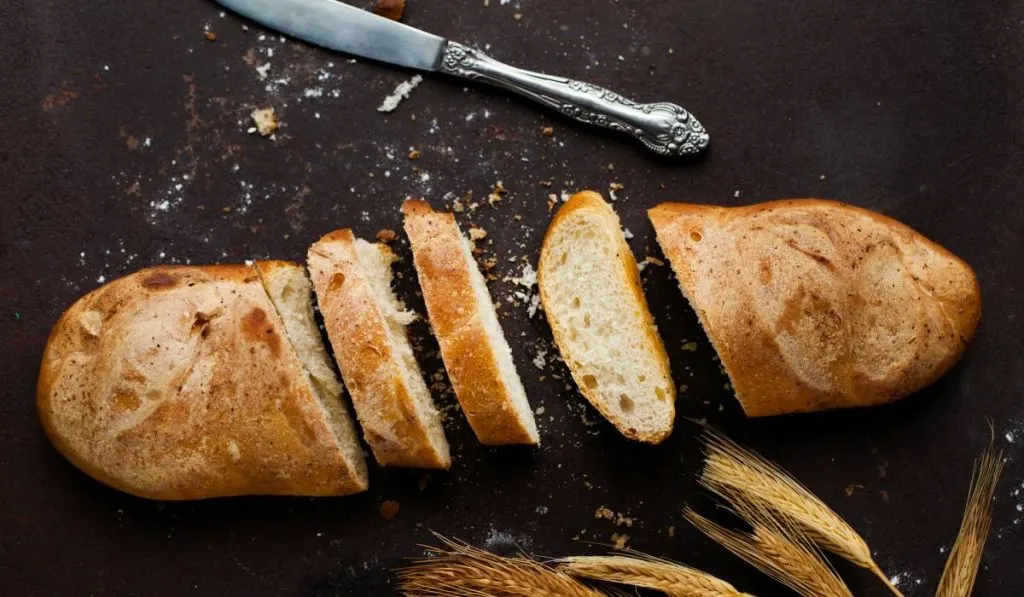
Struggling to perfect your sourdough French bread? You’re not alone. This baking challenge stumps many, but with the right knowledge, you can master the art of baking the perfect loaf.
TL;DR:
- Discover the essential ingredients for authentic sourdough French bread.
- Learn the secrets to perfecting the fermentation process.
- Explore techniques for achieving the ideal crust and crumb.
- Uncover the common mistakes to avoid.
- Gain insights from professional bakers on refining your skills.
Understanding the Basics of Sourdough French Bread
Sourdough French bread, a beloved staple known for its crusty exterior and soft, airy interior, begins with understanding its core components. The key to this bread lies in the starter—a fermented mixture of flour and water that introduces natural yeast and bacteria into your dough.
Ingredients and Their Impact
Using high-quality, unbleached flour, fresh water, and a robust starter can dramatically affect the taste and texture of your bread. Here’s a deeper look at how each ingredient influences your sourdough French bread:
- Flour: The type of flour used is crucial in bread-making. For French bread, unbleached bread flour is preferred for its higher protein content, which helps develop strong gluten networks. This gives the bread its chewy texture and structural integrity. Using whole wheat flour can add flavor and nutrients but may also require adjustments in hydration due to its higher absorption rate.
- Water: The quality of water can influence the fermentation process. Hard water, which is high in minerals, can strengthen the gluten network, while soft water can make the dough more extensible. The temperature of the water used can initiate the fermentation process—warmer water speeds up fermentation, while cooler water slows it down, affecting flavor development.
- Sourdough Starter: A mature, active starter is essential for good leavening and flavor. The starter’s hydration level (the ratio of water to flour) can affect the dough’s consistency and the bread’s final texture. A well-maintained starter will impart a complex, slightly tangy flavor characteristic of traditional French sourdough.
The Fermentation Finesse
Proper fermentation is crucial as it not only leavens the bread but also develops its flavor and texture. Key factors in controlling fermentation include:
- Temperature: The fermentation process is highly dependent on temperature. Ideally, sourdough ferments best between 75°F and 80°F (24°C to 27°C). Temperatures outside this range can lead to under or over-fermentation, affecting flavor and texture.
- Humidity: Maintaining a moist environment during fermentation helps prevent the surface of the dough from drying out, which can inhibit expansion. Covering the dough or placing it in a proofing box can help manage humidity levels.
- Time: Longer fermentation times allow for the development of deeper flavors and more complex textures. Experimenting with bulk fermentation times can help bakers achieve the desired sourness and crumb structure.
Shaping and Baking Techniques
Shaping your loaf is more than an aesthetic practice; it determines how the bread cooks and its final structure. Here are the techniques to perfect your loaf:
- Shaping: After the initial fermentation, degas the dough gently before shaping it into a baton (long loaf) or a boule (round loaf). Proper tension during shaping is critical for the loaf’s final volume and oven spring.
- Scoring: Just before baking, score the loaves with a sharp blade or a lame. Scoring controls where the bread will expand during baking and helps in achieving the desired crust characteristics. The depth and angle of the score can vary depending on the desired aesthetic and crust.
Avoiding Common Pitfalls
Even experienced bakers make mistakes. Here are some common baking errors and how to avoid them:
Inconsistent Baking: Uneven heat distribution can lead to underbaked centers or overbaked crusts. Using a baking stone or preheated Dutch oven can help achieve more consistent heat.
Overproofing: This occurs when the dough ferments for too long, causing the gluten to weaken and the dough to collapse. Watch for signs of overproofing, like a dough that feels overly slack or bubbly.
Under-kneading: Insufficient kneading fails to develop the gluten network necessary for good structure and texture. Ensure the dough passes the windowpane test, indicating good gluten development.

Recipe: Classic Sourdough French Bread
Ingredients
- Sourdough Starter: 150 grams (active and bubbly)
- Water: 350 ml (lukewarm)
- Flour: 500 grams (unbleached bread flour)
- Salt: 10 grams
Instructions
- Prepare the Dough:
- In a large mixing bowl, combine the sourdough starter with lukewarm water and mix until well incorporated.
- Gradually add the bread flour to the mixture, stirring continuously until the dough begins to form.
- Sprinkle in the salt and knead the dough on a lightly floured surface for about 10 minutes, or until it becomes smooth and elastic.
- First Fermentation:
- Place the dough in a lightly oiled bowl, cover it with a damp cloth, and let it rise at room temperature for about 4 to 5 hours, or until it doubles in size.
- Shaping the Dough:
- Once the dough has risen, turn it out onto a floured surface and gently deflate it.
- Divide the dough into two equal parts, and shape each into a long, slender loaf (bâton) or a round loaf (boule) as preferred.
- Place the shaped dough on a parchment-lined baking sheet or a baker’s peel dusted with flour.
- Second Fermentation:
- Cover the loaves loosely with a damp cloth and let them rise for another 1 to 2 hours, or until they puff up nicely.
- Scoring and Baking:
- Preheat your oven to 450°F (232°C). If you have a baking stone, place it in the oven to heat.
- Just before baking, score the loaves with sharp, diagonal cuts using a lame or a sharp knife.
- Transfer the loaves to the oven (use a baking stone if you have one) and bake for 25-30 minutes, or until the crust is golden brown and sounds hollow when tapped on the bottom.
- Cooling:
- Remove the loaves from the oven and let them cool on a wire rack for at least an hour before slicing.
Expert Insights and Uncommon Approaches
Gain from the wisdom of seasoned baker Sandra Olvera as she shares her unique approach to sourdough French bread. This section offers professional insights that challenge conventional baking wisdom and encourage you to experiment with new techniques.
Conclusion: Your Journey to Sourdough Mastery
Mastering sourdough French bread is a rewarding journey of continual learning and experimentation. With the tips and techniques shared here, you’re well on your way to becoming a sourdough aficionado. Each batch of bread you bake is an opportunity to refine your skills and deepen your understanding of this artisanal craft. The beauty of sourdough lies in its simplicity and the impact that even minor adjustments can have on the final product. Whether it’s tweaking hydration levels, experimenting with different types of flour, or adjusting fermentation times, each variation teaches something new and enhances your baking prowess.
Engaging with the community of passionate bakers through forums, baking classes, and social media can open up new avenues of inspiration and knowledge. These connections enrich your journey and integrate you into the cultural tapestry that sourdough represents. Embrace both the challenges and triumphs of baking sourdough French bread. Each loaf is a testament to your dedication and reflects your evolving skills. Remember, the path to mastery isn’t about achieving perfection; it’s about enjoying the process and savoring every slice of progress. Keep baking, keep learning, and let your passion for sourdough elevate your culinary artistry.
FAQs
What is the best flour to use for sourdough French bread?
Unbleached all-purpose or bread flour works best due to its protein content, which is ideal for developing gluten.
How long should I ferment my sourdough starter?
It typically takes about 5 to 7 days to develop a mature starter that will give your bread the best flavor and texture.
What’s the optimal temperature for fermenting sourdough?
Maintaining a consistent temperature around 75°F (24°C) during fermentation is key for optimal yeast activity and dough development.
How can I tell if my bread is fully cooked?
Your bread should have a deep, golden-brown crust, and the internal temperature should read 200°F (93°C) when fully baked.
Can I make sourdough French bread in a home oven?
Absolutely! With the right techniques and tools, like a baking stone or Dutch oven, you can achieve professional-quality sourdough bread at home.
Join Us and Transform >
Don’t Be an Amateur! Master the Art of Sourdough Bread!




Leave a comment